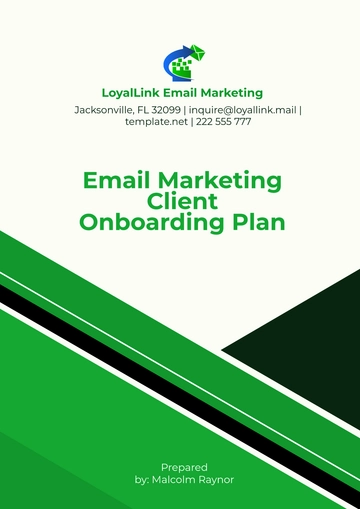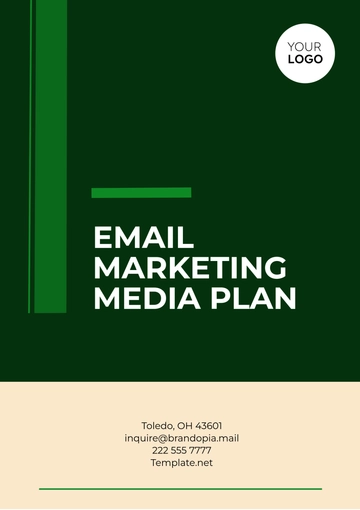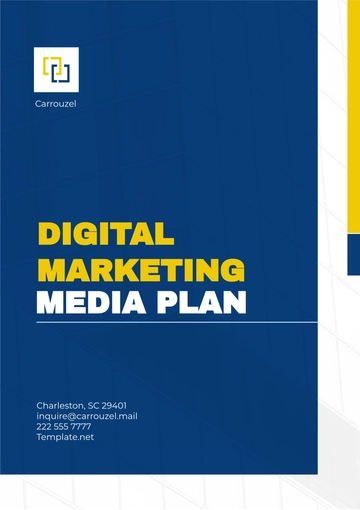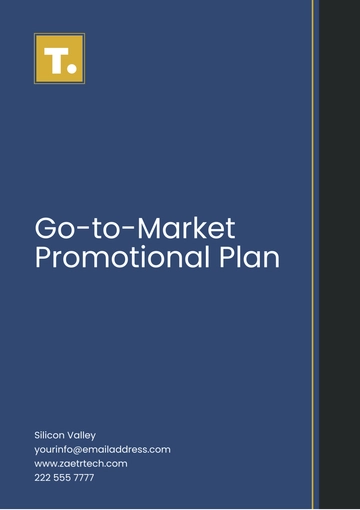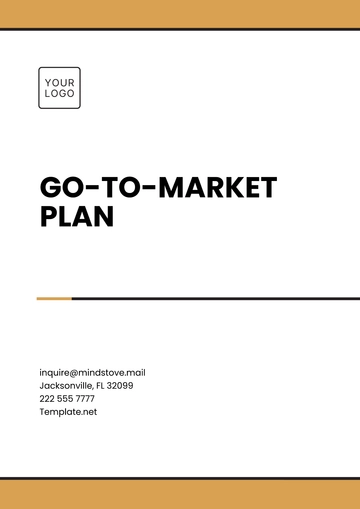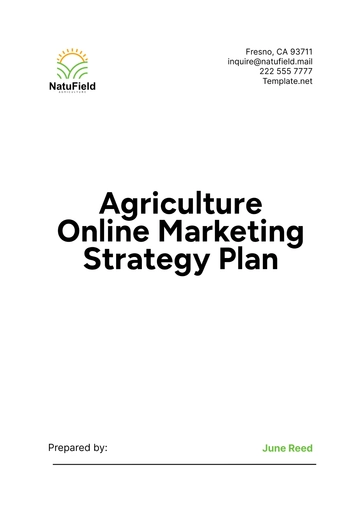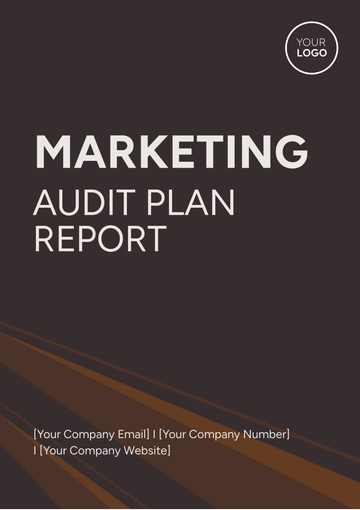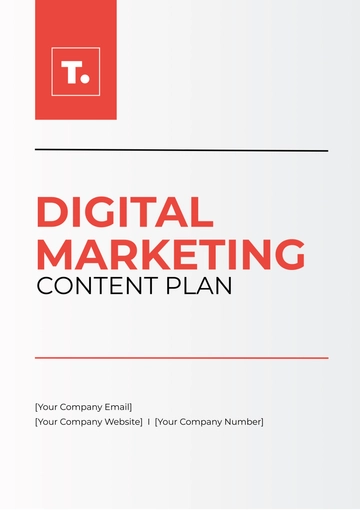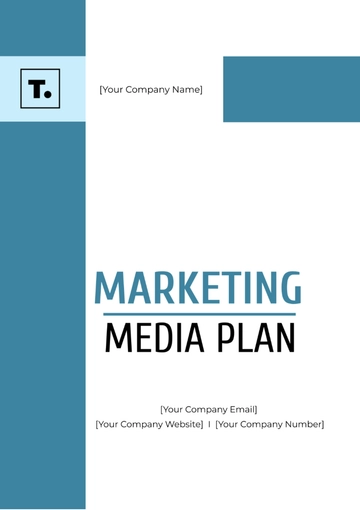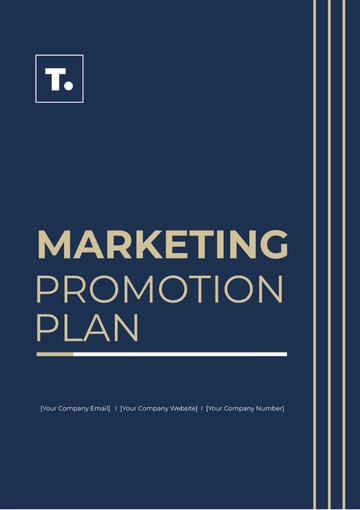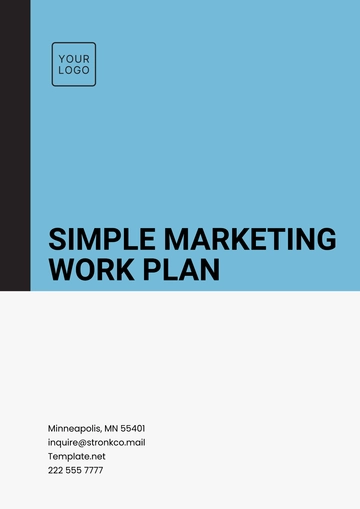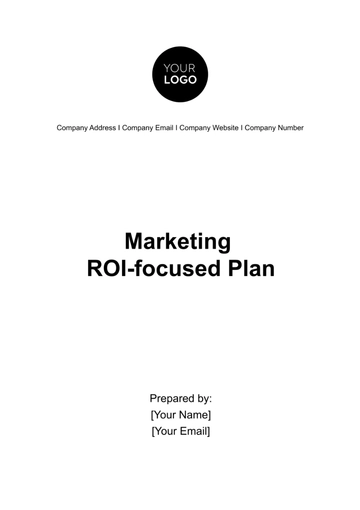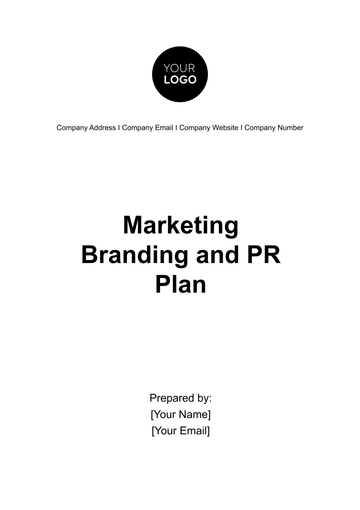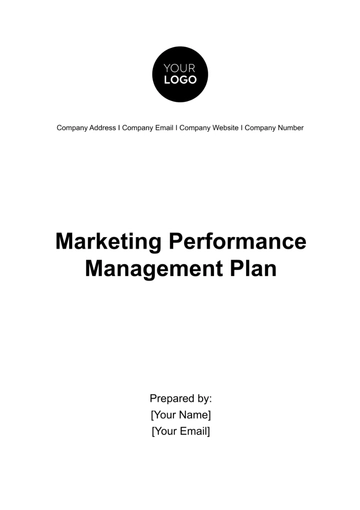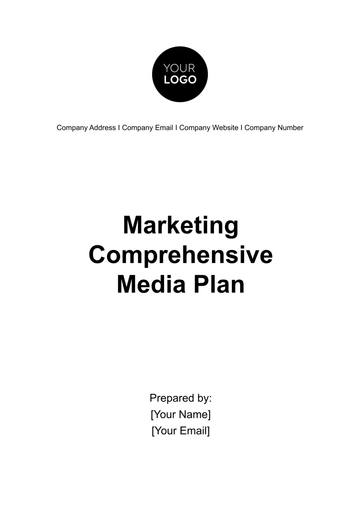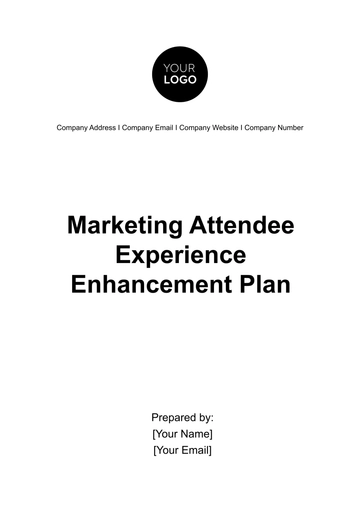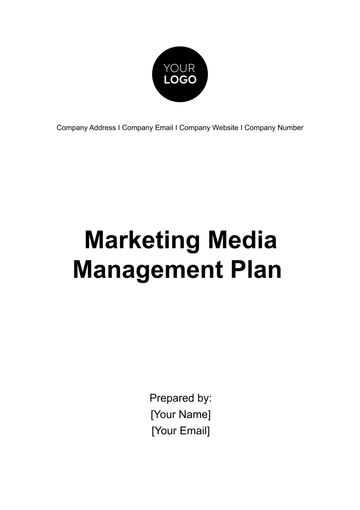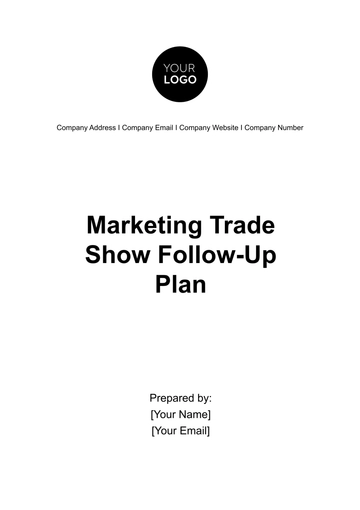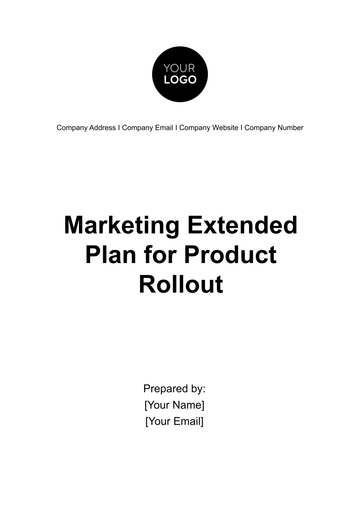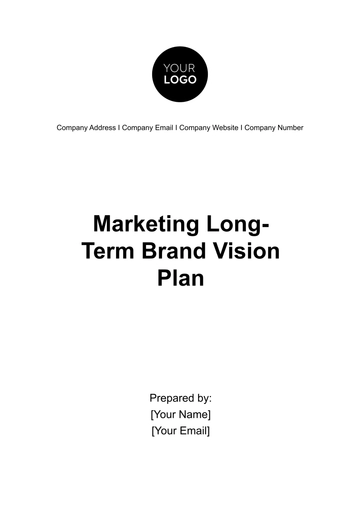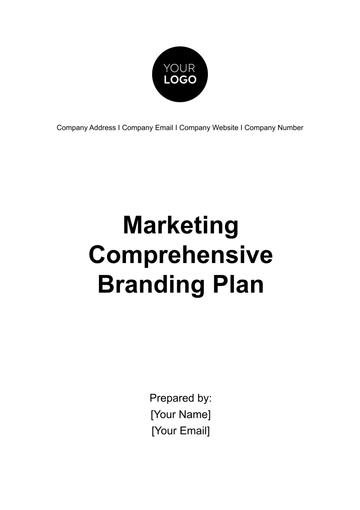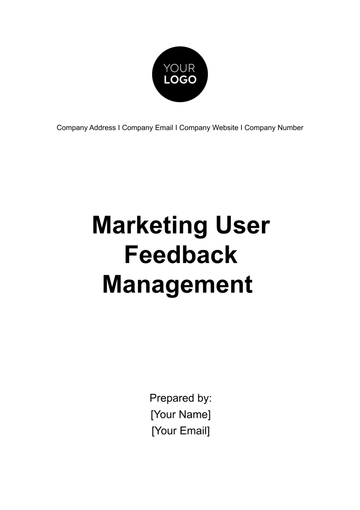Free Email Marketing Media Plan
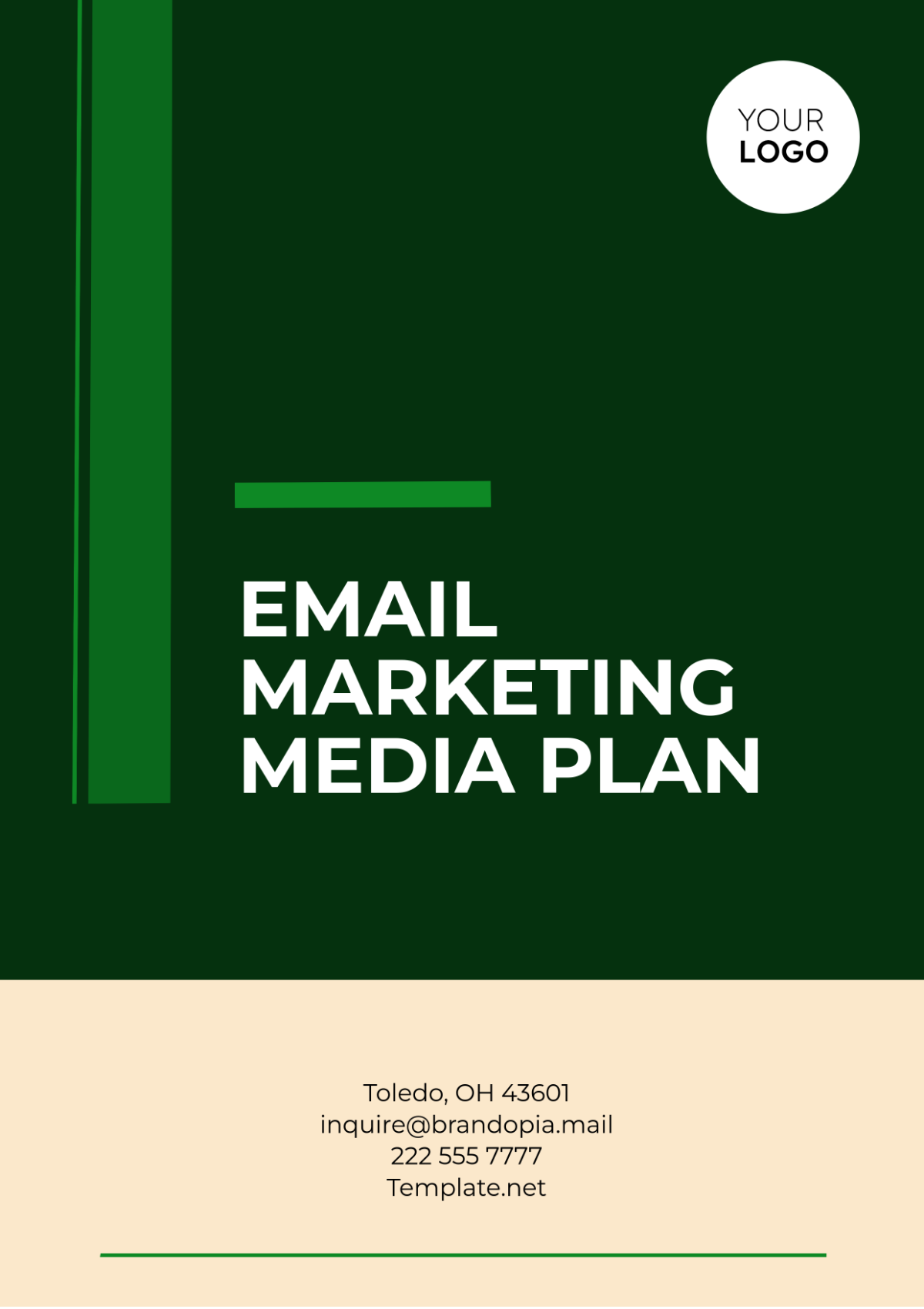
Prepared by:
[YOUR NAME]
[YOUR COMPANY NAME]
1. Executive Summary
The Email Marketing Media Plan aims to outline a structured approach for an email marketing campaign designed to engage customers, promote GlowUp Skincare Line, and drive measurable conversions. This plan details campaign objectives, audience segmentation, email content, schedule, budget, and key performance indicators (KPIs) to track success.
2. Campaign Objectives
Identify the main objectives of the campaign, which may include:
Increasing brand awareness among new or existing customers.
Driving conversions for a specific product or service.
Enhancing customer engagement through regular interactions.
Improving customer retention and loyalty by offering exclusive promotions.
Example Objective: Achieve a 15% increase in conversion rate for the email campaign over three months.
3. Target Audience
Define the specific audience segments for the email campaign:
Demographic Information: Age, gender, location, income, etc.
Behavioral Segmentation: Purchase history, website interaction, email engagement level.
Psychographic Segmentation: Interests, lifestyle, values.
Example Target Segment: Customers aged 25-40 who have purchased within the last six months.
4. Campaign Strategy
Outline the approach to achieving objectives:
Content Strategy: Plan emails to be visually appealing, concise, and relevant. This can include personalized recommendations, promotional offers, new product highlights, or educational content.
Frequency & Schedule: Decide on the cadence, such as a weekly or bi-weekly email, and develop a campaign timeline.
Example Strategy: Develop a series of four emails—two educational and two promotional—sent every two weeks.
5. Content Outline and Messaging
Create a clear message and tone for each email that aligns with your brand identity and resonates with the target audience.
Email Number | Subject Line Example | Main Message | Call-to-Action |
|---|---|---|---|
1 | "Discover Your Perfect Match!" | Introduction to the new product line with a personalized touch | "Shop Now" |
2 | "Here’s How It Changes the Game" | Product benefits and customer testimonials | "Learn More" |
3 | "Limited Offer Just for You!" | Exclusive discount for subscribers | "Redeem Discount" |
4 | "Last Chance to Save!" | A final reminder of the promotion expiration | "Shop Before It’s Gone" |
6. Design and Format
Layout: Use a responsive design suitable for both mobile and desktop views.
Visuals: Incorporate images, product visuals, or graphics that convey your brand’s aesthetic.
Personalization Elements: Dynamic fields for customer names, purchase history, or location.
Example Design: Each email includes the customer’s first name in the greeting, a strong hero image at the top, and a clear call-to-action button.
7. Scheduling and Timeline
Establish a timeline that includes specific dates and times for each email launch:
Launch Date | Key Focus | |
|---|---|---|
1 | November 15, 2054 | Product Introduction |
2 | November 22, 2054 | Product Benefits and Features |
3 | November 29, 2054 | Exclusive 20% Discount |
4 | December 6, 2054 | Final Call for Discount |
8. Budget
Outline the budget needed for creating and sending the email campaign, including costs associated with:
Email Marketing Software: Subscription fees for email platforms like Mailchimp, Constant Contact, etc.
Content Creation: Costs for design, copywriting, and other creative resources.
List Management: Costs associated with list cleaning, segmentation, or acquisition.
Example Budget: Allocate $500 for design, $300 for copywriting, and $200 for software, totaling $1,000.
9. Performance Metrics and KPIs
Define metrics to assess the effectiveness of the campaign:
Open Rate: Measure initial engagement with the subject line and sender.
Click-Through Rate (CTR): Track how many recipients clicked on links within the email.
Conversion Rate: Calculate how many people completed the intended action.
Bounce Rate: Monitor deliverability issues.
Unsubscribe Rate: Track the loss of subscribers as feedback on email content.
Example KPI: Aim for a 25% open rate and a 5% CTR.
10. Analysis and Optimization
Establish a schedule to analyze the campaign and make adjustments if needed:
A/B Testing: Test different subject lines, CTAs, or layouts.
Feedback Loop: Use customer feedback and behavioral data to refine future emails.
Regular Reporting: Weekly or monthly reports to track ongoing campaign performance against benchmarks.
- 100% Customizable, free editor
- Access 1 Million+ Templates, photo’s & graphics
- Download or share as a template
- Click and replace photos, graphics, text, backgrounds
- Resize, crop, AI write & more
- Access advanced editor
The Email Marketing Media Plan Template from Template.net is a customizable and editable solution for your email campaign strategy. Tailor every aspect to suit your goals with ease. Fully editable in our Ai Editor Tool, this template enables you to create a professional, effective email marketing plan that drives engagement and conversions.
You may also like
- Finance Plan
- Construction Plan
- Sales Plan
- Development Plan
- Career Plan
- Budget Plan
- HR Plan
- Education Plan
- Transition Plan
- Work Plan
- Training Plan
- Communication Plan
- Operation Plan
- Health And Safety Plan
- Strategy Plan
- Professional Development Plan
- Advertising Plan
- Risk Management Plan
- Restaurant Plan
- School Plan
- Nursing Home Patient Care Plan
- Nursing Care Plan
- Plan Event
- Startup Plan
- Social Media Plan
- Staffing Plan
- Annual Plan
- Content Plan
- Payment Plan
- Implementation Plan
- Hotel Plan
- Workout Plan
- Accounting Plan
- Campaign Plan
- Essay Plan
- 30 60 90 Day Plan
- Research Plan
- Recruitment Plan
- 90 Day Plan
- Quarterly Plan
- Emergency Plan
- 5 Year Plan
- Gym Plan
- Personal Plan
- IT and Software Plan
- Treatment Plan
- Real Estate Plan
- Law Firm Plan
- Healthcare Plan
- Improvement Plan
- Media Plan
- 5 Year Business Plan
- Learning Plan
- Marketing Campaign Plan
- Travel Agency Plan
- Cleaning Services Plan
- Interior Design Plan
- Performance Plan
- PR Plan
- Birth Plan
- Life Plan
- SEO Plan
- Disaster Recovery Plan
- Continuity Plan
- Launch Plan
- Legal Plan
- Behavior Plan
- Performance Improvement Plan
- Salon Plan
- Security Plan
- Security Management Plan
- Employee Development Plan
- Quality Plan
- Service Improvement Plan
- Growth Plan
- Incident Response Plan
- Basketball Plan
- Emergency Action Plan
- Product Launch Plan
- Spa Plan
- Employee Training Plan
- Data Analysis Plan
- Employee Action Plan
- Territory Plan
- Audit Plan
- Classroom Plan
- Activity Plan
- Parenting Plan
- Care Plan
- Project Execution Plan
- Exercise Plan
- Internship Plan
- Software Development Plan
- Continuous Improvement Plan
- Leave Plan
- 90 Day Sales Plan
- Advertising Agency Plan
- Employee Transition Plan
- Smart Action Plan
- Workplace Safety Plan
- Behavior Change Plan
- Contingency Plan
- Continuity of Operations Plan
- Health Plan
- Quality Control Plan
- Self Plan
- Sports Development Plan
- Change Management Plan
- Ecommerce Plan
- Personal Financial Plan
- Process Improvement Plan
- 30-60-90 Day Sales Plan
- Crisis Management Plan
- Engagement Plan
- Execution Plan
- Pandemic Plan
- Quality Assurance Plan
- Service Continuity Plan
- Agile Project Plan
- Fundraising Plan
- Job Transition Plan
- Asset Maintenance Plan
- Maintenance Plan
- Software Test Plan
- Staff Training and Development Plan
- 3 Year Plan
- Brand Activation Plan
- Release Plan
- Resource Plan
- Risk Mitigation Plan
- Teacher Plan
- 30 60 90 Day Plan for New Manager
- Food Safety Plan
- Food Truck Plan
- Hiring Plan
- Quality Management Plan
- Wellness Plan
- Behavior Intervention Plan
- Bonus Plan
- Investment Plan
- Maternity Leave Plan
- Pandemic Response Plan
- Succession Planning
- Coaching Plan
- Configuration Management Plan
- Remote Work Plan
- Self Care Plan
- Teaching Plan
- 100-Day Plan
- HACCP Plan
- Student Plan
- Sustainability Plan
- 30 60 90 Day Plan for Interview
- Access Plan
- Site Specific Safety Plan
